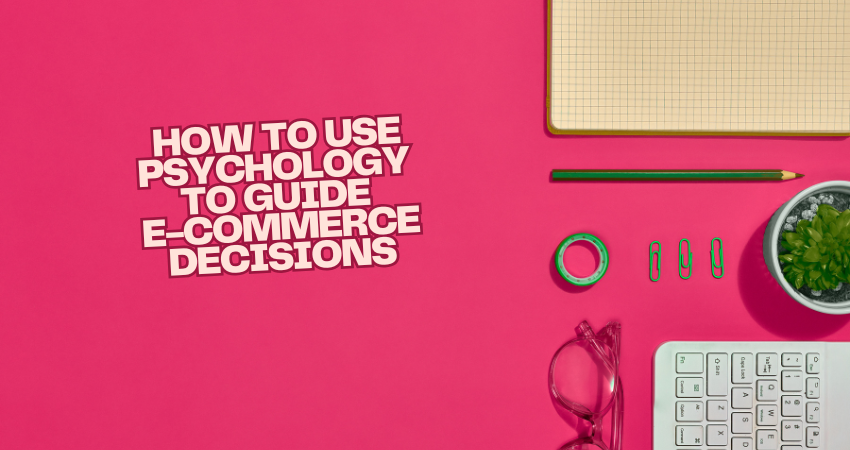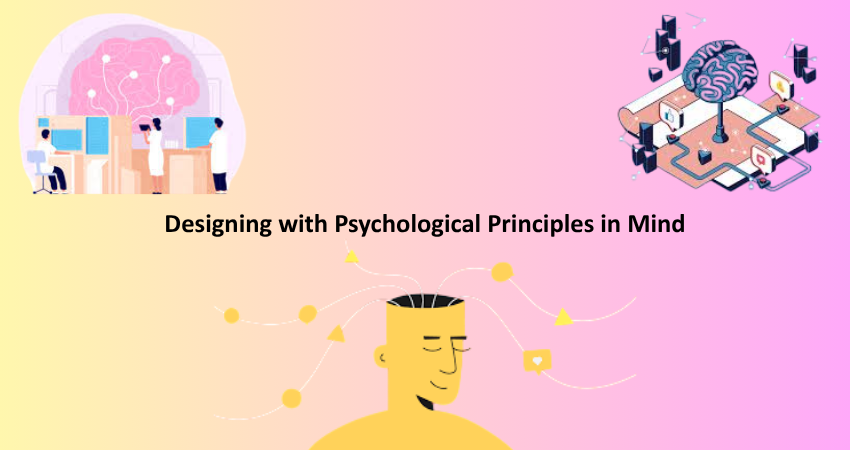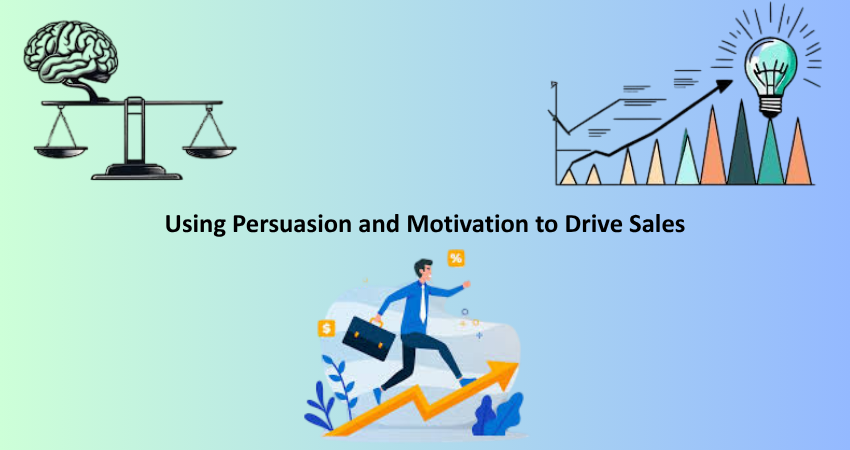
Introduction
In the e-commerce battlefield, with thousands of online businesses starving for attention, mere exposure of a good product is not enough. Success is determined by understanding how buyers think, behave and make decisions, and this is where psychology plays an important role. Applying psychological principles to all aspects of the e-commerce business-from website design to product pricing-will help you induce and shape shopper behavior, increase conversions, and develop long-term customer loyalty. Psychology aids in understanding consumer responses to various triggers, thereby enabling you to drive their actions and decisions in a more calculated manner.
Understanding how color theory can invoke feelings, social proof can build trust, and scarcity can incite urgency will, in turn, increase the effectiveness of your store. These principles exist not only in tariffs; they also influence the designing of product pages, organization of navigation, and follow-up after sales. In this article, we outline some of the main psychological principles that, when employed strategically, will allow for smarter and better data-driven e-commerce decisions. Each principle has its theoretical underpinning and can be practically, ethically, and effectively applied.
Leveraging Cognitive Biases in E-Commerce
Anchoring Bias and Price Perception
Anchoring bias refers to the tendency of people to give excessive weight to the first information they encounter (the “anchor”) when making decisions. This principle can be leveraged in e-commerce in the context of value perceptions: for instance, if an item has an original price of $100 and is shown to be on sale for $70, that original price serves as an anchor, rendering the sale price much more attractive. Without the anchor, $70 might even be a fair price, but with the presence of the anchor, it seems like a bargain. That is why strikethrough pricing works effectively.
To maximize the effect of anchoring, use comparison prices as much as possible. When launching premium products, list this against alternative, higher-priced versions to provide reference. Another way to reverse-anchor is to display your highest-priced item first on a product list, so that subsequent items look comparatively cheaper. Anchoring works across pricing but can also be applied to shipping times, delivery options, and product bundles. By placing your offer in an advantageous context, you make shoppers feel that they are making a rational, favorable decision.
Scarcity, Urgency, and the Fear of Missing Out
The scarcity phenomenon tells us that any given thing can become more valuable with the perception that its supply is limited. This principle fuels urgency and hits on FOMO in the online shopping world. By saying, “only 3 left in stock,” or offering a “limited-time offer,” one’s exclusivity is given a sense of urgency, and a shopper is left to feel that they may miss out on a great deal, and they are more willing to jump at the chance. According to the principle of psychology in loss aversion, loss feels more painful than gain.
Thus, the right application of the use of urgency signals, for example, countdown timer, low-stock alert, flash sale will be able to convince customers to make their purchasing decisions faster but it may also create the contrary effect when it’s over-marketing. Be sure the scarcity is real: erode trust. Tie the urgency to some significant event – holiday shopping, end-of-the-season sales. Use urgency that is personalized whenever possible – for example, let an old customer know that something in his cart is almost out of stock. Really, FOMO is a powerful motivational tool, but only when it rings true and adds real value.
Designing with Psychological Principles in Mind

The Power of Simplicity and Cognitive Ease
Cognitive ease is a psychological term that denotes the humans’ preference or inclination for easy or less hard thinking and understanding. In e-commerce, it relates to having features in a website layout that decreases friction in the course of a private buyer and thus making purchase paths as intuitive as possible. A cluttered, confusing site overwhelms visitors and outlasts them in high chances of bouncing. On the other hand, clear navigation, concise product descriptions, and visual hierarchy improve the user satisfaction while helping them guide their passage from product discovery to checkout.
To create cognitive ease, have a focus on clean designs, consistent layouts, and intuitive user flows. Make sure your call-to-action (CTA) buttons stay easy to find and clearly labeled. Cognitive overload occurs when you have too many decisions to make by the user about a page. Instead of dozens of product filters, prioritize highlighting a few that are most relevant. The easier it is for customers to assimilate aspects to make decisions, the better likelihood they have of completing a purchase. This is not solely about pleasing aesthetics, but designing that user experience for which the brain prefers to function.
Color Psychology and Emotional Influence
Colors are capable of thousands of emotions and the appropriate color selections in e-commerce can dramatically influence behavior. Red is supposed to convey urgency, which is why it is selected in many instances for clearance sales. Blue, on the other hand, indicates trustworthiness and reliability; hence, it’s often used on payment confirmation pages and financial service websites. Yellow is a pretty loud color; it denotes cheerfulness, which makes it suitable for highlighting new arrivals or sales. Being aware of color psychology will help e-commerce brands build atmospheres that trigger an emotional response from their target audience.
While such associations exist, context and culture also play an important role in shaping perceptions of colors. So test your color combinations for CTAs, backgrounds, and banners and see what combinations yield the highest engagement or conversions. Maintain consistency; create and stick to a brand color scheme sitewide in order to help establish brand awareness. Color provides great interest but works subtly in directing users’ perceptions, creating moods, and instilling action. The truly exciting thing is that when used wisely, color can be a quiet yet potent messenger in the arsenal of your e-commerce.
Building Trust and Reducing Buyer Anxiety
The Psychology of Social Proof
Social proof refers to the situation where people consider the actions of others to reflect correct behavior in a given situation due to psychological inferring. In e-commerce, this means that shoppers are going to trust and buy from that online store which appears to be popular and well-rated. Reviews and testimonials, star ratings, and customer images all serve as validations and help in reducing perceived risk. When visitors to a site notice that others have purchased and enjoyed the product, they themselves feel far more confident to do the same.
To maximize your social-proof potential, sprinkle user-generated content across every nook and cranny of your site. Put customer reviews front-and-center on product pages with a way of filtering by rating or keyword. Utilize visual reviews in the form of customer-submitted photos or video unboxings. Score some endorsements and expert opinions to further strengthen your credibility. Truly let those social signals shine by showing live activity, such as, “20 people viewing this,” or “5 sold in the last hour.” Social proof reassures first-time visitors but also makes returning buyers comfortable introducing something new to their cart. The more evidence of happy customers there are, the less anxious shoppers will feel about going through with a purchase.
Guarantees, Returns, and Reducing Decision Paralysis
The psychological barriers that an online buyer faces are among the most difficult to get through, and one of those would be the fear of making a purchase wrong. There is no way for a customer to feel or try anything on an item before buying it as he does in a physical store. This kind of uncertainty generates hesitation within the consumer. The more generous the return policy, the clearer the warranty, and the more confident they are in a money-back guarantee, the more the fears may be dispelled. It serves as a safety net since customers know they will have somewhere to turn if the product fails to meet their expectations. Thus, they will feel much more comfortable proceeding with their purchase.
And ensure each potential safety net with limited options to lessen the paralysis in choice. Too many choices always create a variety; a buyer gets overwhelmed, and no decision is made at all. It could use curated product selections, best-seller categories, or recommendation engines to entice customers to buy. It should emphasize differences in features of similar products and compare them where needed to bring simplification to the decision-making process. Clear messaging, trust signals, and post-purchase support simplify decision-making. Customers are moved to action by friction removal and fear-elimination, whereby they sense control and comfort in making the purchase.
Using Persuasion and Motivation to Drive Sales

Reciprocity and the Power of Freebies
Reciprocity refers to the psychological mechanism by which a person feels obliged to return the favor after having received something. In e-commerce, giving away value for free can trigger this effect. Valuable offerings can include free samples, downloadable resources, the welcome discount, or helpful content. When a brand offers value up front without any expectation of reciprocity, it wins goodwill, and the likelihood that a shopper will reciprocate by purchasing or subscribing increases.
In effecting reciprocity, ensure your offer is truly valuable. A free sample that solves a concern or a high-quality lead magnet that schools a user portrays your brand as generous and competent; healing a relationship before a transaction. Even small things like handwritten thank-you notes or free stickers can perk up customer sentiments and induce loyalty. From a social perspective, reciprocal exchanges move the focus of interaction toward relationships. When treated this way, customers feel appreciated and valued and are more likely to return, refer their friends, and champion a product long-term.
Commitment, Consistency, and the Path to Loyalty
They are driven by their own existing patterns of behavior and their own past commitments to maintain this. E-commerce businesses can encourage users to take an action—registering on the site, subscribing to a newsletter, saving an item to a wishlist—thus improving the chances that they will later want to take larger actions, such as making a purchase. These all work toward micro-commitments, where a brand gradually creates a feeling of ownership and dependence in the shopper toward that particular brand.
To put that in practice, create that e-commerce trip in a way that encourages progressive commitment. Start with very simple, low-risk actions, and reward them, like discounts for signing up or making participation in onboarding fun and interactive. Bring out programs that facilitate loyalty through repeated behavior with the chances of exclusive access to sales or a headstart to some product launches. Trigger email sequences to re-engage users according to actions. These build the identity of the customer more closely around a fate shared with your brand. Such commitments only increase the customer’s investment in your product and make the chance of their remaining buyers at your store even better.
Conclusion
Psychology forms the concealed engine within which all effective e-commerce strategy churns.Knowing how shoppers think, feel, and decide is a way to design experiences that resonate deep and wide to effect better outcomes. Psychologize your e-commerce to understanding cognitive biases such as anchoring or scarcity; build trust through social proof and conduct generous policies to reduce buyer anxiety, such tools provide e-commerce businesses with strategic cognitive prowess. The before-mentioned are not tricks but mint-tested tools that honor the customer while inducing the user to be more engaged.
Such manipulation should be done to guide decisions rather than it becoming a mere trickery of attraction. This way, one would build up a long-lasting relationship based on value and trust. This is why testing, learning, and iteration cycles are essential. It helps in learning and adopting what works for the most unique audience. This is what the perspective from this guide empowers in making smarter, more human-centered decisions for your e-commerce business.